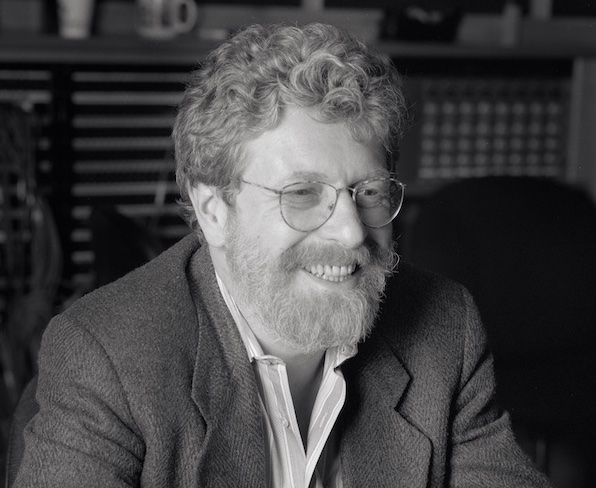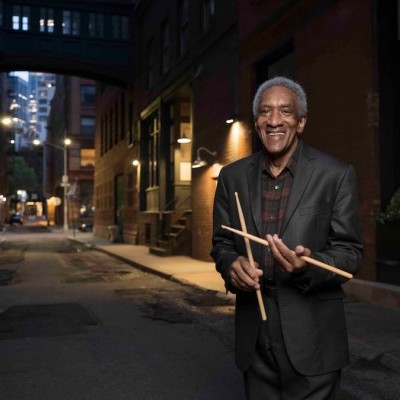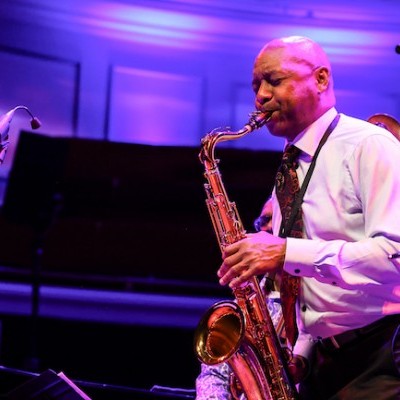Jun 3, 2025 11:25 AM
In Memoriam: Al Foster, 1943–2025
Al Foster, a drummer regarded for his fluency across the bebop, post-bop and funk/fusion lineages of jazz, died May 28…

“No matter what you produce or do in your life, the thing you’ll be remembered for is rescuing all that Blue Note material,” Woody Shaw once said of Michael Cuscuna, and Cuscuna is fine with that.
(Photo: Jimmy Katz)Once upon a time, a tiny handful of early jazz critics wrote about rare old jazz records like priests talking about the Bible when most of the world couldn’t even read. Like the lonely tree in the forest, early jazz history and legend constituted a silent saga you took on faith. The scriptures were closely held.
Then came the swing era, and reissues boomed. New fans demanded to hear the real evidence for themselves. A new breed of independent discographer began to emerge, part producer and part archeologist. Then George Avakian and Dave Dexter showed Columbia and Decca how to mint free money from their vaults. Packaging, prestige and regularity came to the reissue.
They and a select core of successors would turn graveyards of entombed performances into meticulously documented monuments. They would rescue reputations from obscurity and put the best of the past within reach of the present and future. They would secure recognition and even immortality for the overlooked and make a place where their bodies of work could live in perpetual honor and comfort. They are, in many ways, the gatekeepers to jazz’s Valhalla.
Accordingly, this year DownBeat honors Michael Cuscuna for his lifetime of achievement in the recording industry, which includes production credits on more that 2,600 LPs and CDs, the preponderance of which have been reissues. Between 1985 and 2007 alone, he produced at least 60 reissues a year for Blue Note and its sister labels. “Except for a few artists,” he says, “basically reissues kept us afloat. They were the pad that kept us in a profit position.” It would be the training camp that prepared him for the definitive box collections on Mosaic Records, the label he founded in 1982 with Charlie Lourie.
Born in Stanford, Connecticut, in 1948, Cuscuna first got into music at the age of 9 or 10. “It was contemporary R&B on the radio at first,” he recalled recently. “But I played drums on a little starter kit and got into drum records like Gene Krupa and Buddy Rich on Verve, then Max Roach and Art Blakey. When I started to hear the music around the drums, that’s when I got completely hooked. I went through Benny Goodman, Dave Brubeck and the MJQ, until I caught up to what was going on around me around 1960.
“By age 14, I was going to Birdland, which had a peanut gallery. That’s when I heard Blakey and the Messengers, the Coltrane Quartet and Miles. They became my passion and still are. It’s the stuff that gets to you between about 12 and 25 that stays with you for life. You never absorb music in quite the same way after that.”
He was in sync with his time but knew he was not a musician. So he looked for other entry points into the business — record stores, radio, attending the Wharton School of Business, even writing for DownBeat. He learned the ropes, the labels and an endless discography of sessions, released and unreleased, especially of Blue Note sessions. When he met Charlie Lourie, Blue Note’s Los Angeles marketing chief, at a press party in the early ’70s, Lourie was mightily impressed. “He said let me see if I can pull together a deal,” Cuscuna said. “In a day, my dream came true. I started diving into the Blue Note vault, a floor full of steel shelving crammed with unissued Blue Note material. Jesus Christ, I’m in heaven. The wealth of it was more than I imagined.”
He got about 80 releases into the Japanese market, and about 20 in the the U.S. But by the ’70s the jazz record business was dying. “I was being paid in free records,” says Cuscuna, whose heaven was suddenly in waiting. Blue Note was retired and would not return until the EMI takeover in 1985 and the arrival of Bruce Lundvall as the company’s president.
Meanwhile, with Blue Note in limbo, Cuscuna and Lourie saw an opportunity that became the model for Mosaic Records: license a specific body of work for a limited run of 5,000 copies and package it with the care and authority that Columbia had brought to its box sets of the 1960s.
“I was incredibly impressed by them,” Cuscuna remembers. “They were very much on my mind when I came up with the Mosaic idea. Box sets had fallen by the wayside by late ’70s. So I thought it was time to step in with Mosaic and fill the gap.”
The first Mosaic came out in 1983: Thelonious Monk: The Complete Blue Note Recordings. For Mosaic, direct marketing, no distributors and low inventories meant ultimate sustainability. For Blue Note and sister EMI labels particularly, Mosaic transformed a dusty archive into easy cash. Modernity mingled with tradition. Kid Ory and George Lewis were served along with Mingus and Mulligan, although the catalog has tilted long-term to the post-war scene. Today there are more than 275 Mosaic collections, most circulating as rare collectors items.
Mosaic also transformed the fundamental standards of the reissue and the album note. “I didn’t want people to go through what I went through” Cuscuna says, meaning mixing sessions without coherence or explanation. “It drove me nuts. My idea was to make Mosaic definitive, with sessions in proper order, in the best sound, and with the context that only thorough annotation could provide.”
Definitive also meant new material where possible, inclusive of everything released and previously unreleased. For Cuscuna, this came with limits, however. “I’m not a fan of false starts and breakdowns,” he says. “But judicially used, I’m fine with partial and alternate takes. But I don’t think you should ever put out anything that would embarrass the artist. It’s an invasion of privacy. I’m not sure there’s a statute of limitation on that rule. That’s my take, at least.”
Mosaic had early competition. Time-Life and Franklin Mint each had a similar jazz series at the time. By the mid-’80s, however, they were selling for $8 at Goody’s and Tower Records. “That scared me,” says Cuscuna, “because we were only a few years into our company when that happened.” Today you’ll still find Time-Life sets in vinyl stores for a few bucks. But the hand-numbered Mosaics sell on Ebay, sometimes for hundreds of dollars.
Many years ago, Woody Shaw said of Cuscuna, “No matter what you produce or do in your life, the thing you’ll be remembered for is rescuing all that Blue Note material.”
“Looking back all these years,” Cuscuna says today, “I’m content with that.” DB

Foster was truly a drummer to the stars, including Miles Davis, Sonny Rollins and Joe Henderson.
Jun 3, 2025 11:25 AM
Al Foster, a drummer regarded for his fluency across the bebop, post-bop and funk/fusion lineages of jazz, died May 28…

“Branford’s playing has steadily improved,” says younger brother Wynton Marsalis. “He’s just gotten more and more serious.”
May 20, 2025 11:58 AM
Branford Marsalis was on the road again. Coffee cup in hand, the saxophonist — sporting a gray hoodie and a look of…

“What did I want more of when I was this age?” Sasha Berliner asks when she’s in her teaching mode.
May 13, 2025 12:39 PM
Part of the jazz vibraphone conversation since her late teens, Sasha Berliner has long come across as a fully formed…

Roscoe Mitchell will receive a Lifetime Achievement award at this year’s Vision Festival.
May 27, 2025 6:21 PM
Arts for Art has announced the full lineup for the 2025 Vision Festival, which will run June 2–7 at Roulette…

Benny Benack III and his quartet took the Midwest Jazz Collective’s route for a test run this spring.
Jun 3, 2025 10:31 AM
The time and labor required to tour is, for many musicians, daunting at best and prohibitive at worst. It’s hardly…